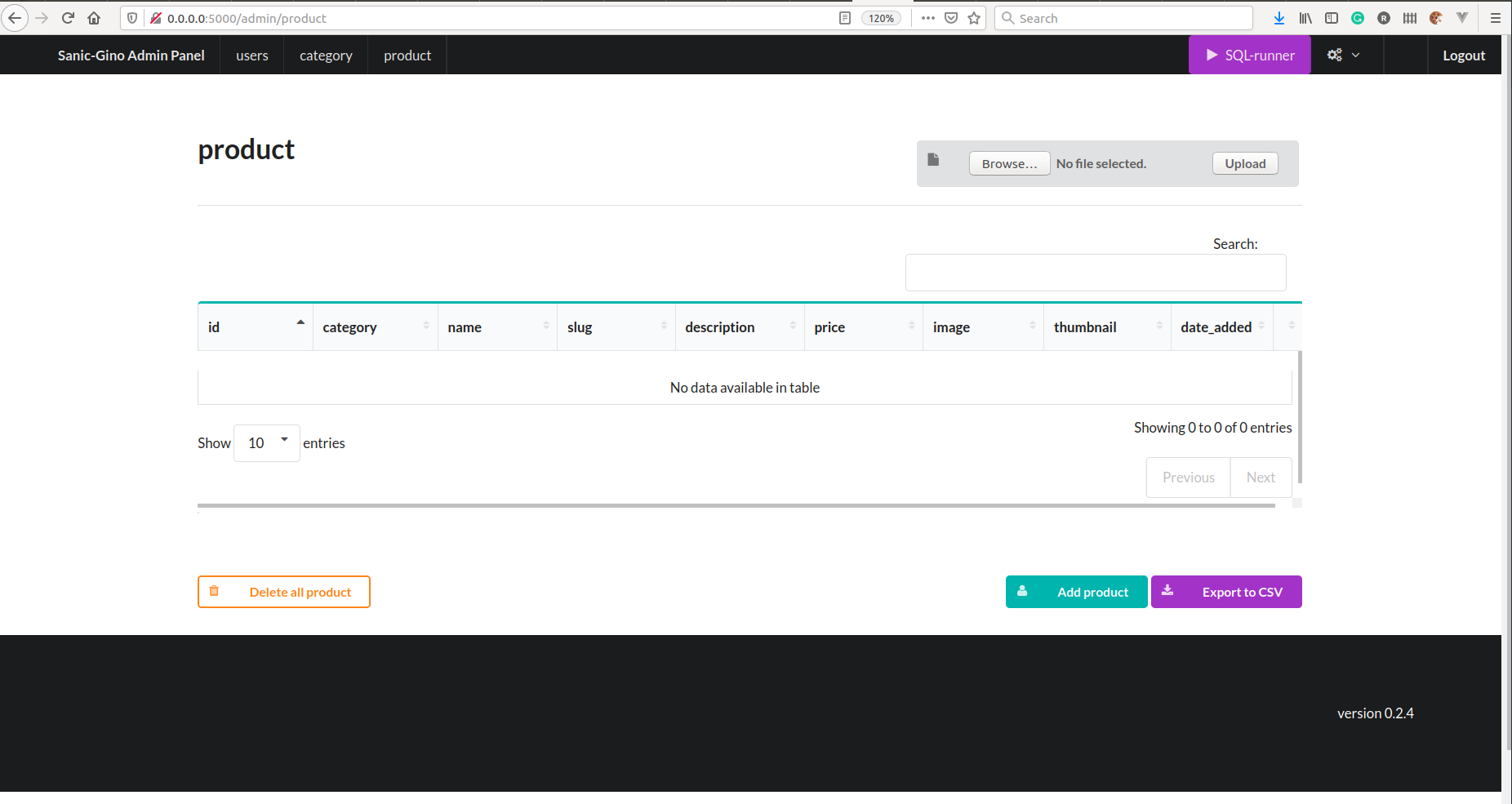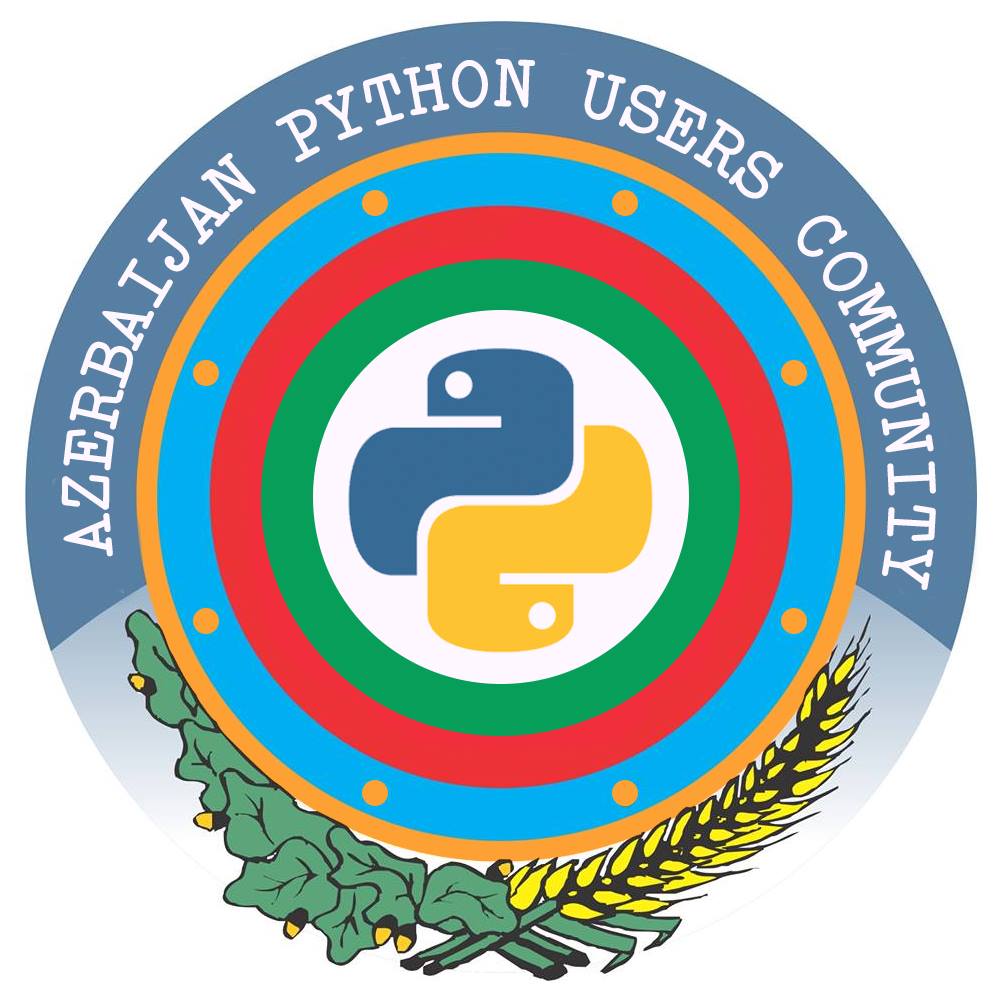# Start Product app, create database models and activate admin panel
Let's quickly start our product app:
$ cd backend
$ fastapi startapp product
FastAPI app created successfully!
Then add models to the product/models.py:
from backend import db
class Category(db.Model):
__tablename__ = 'category'
id = db.Column(db.BigInteger(), primary_key=True)
name = db.Column(db.String(), unique=True, nullable=False)
slug = db.Column(db.String(), unique=True, nullable=False)
class Product(db.Model):
__tablename__ = 'product'
id = db.Column(db.BigInteger(), primary_key=True)
category = db.Column(db.BigInteger(), db.ForeignKey('category.id'))
name = db.Column(db.String(), unique=True, nullable=False)
slug = db.Column(db.String(), unique=True, nullable=False)
description = db.Column(db.Unicode(), nullable=True)
price = db.Column(db.Numeric(), nullable=False)
image = db.Column(db.String(), nullable=True)
thumbnail = db.Column(db.String(), nullable=True)
date_added = db.Column(db.DateTime(), nullable=False)
I have decided to restructure the project again a bit. I have moved migrations from the backend to be near the backend and also alembic.ini should be near.
The structure is going to be something like:
❯ tree -P backend -I __pycache__
.
├── backend
│ ├── app
│ │ ├── core
│ │ └── csv_to_upload
│ ├── product
│ │ └── api
│ ├── tests
│ └── users
│ └── api
├── htmlcov
└── migrations
└── versions
Import new models in the migrations/env.py:
from backend import settings
from backend import db
from backend.users.models import User
from backend.product.models import Category, Product
config.set_main_option('sqlalchemy.url', settings.DATABASE_URI)
target_metadata = db
Prepare new migrations:
$ poetry run alembic revision --autogenerate -m 'added category and product models'
Generating /home/shako/REPOS/Learning_FastAPI/Djackets/migrations/versions/8d45bccb2ed0_added_category_and_product_models.py ... done
Running migrations:
$ poetry run alembic upgrade head
INFO [alembic.runtime.migration] Context impl PostgresqlImpl.
INFO [alembic.runtime.migration] Will assume transactional DDL.
INFO [alembic.runtime.migration] Running upgrade 7967edfd9f18 -> 8d45bccb2ed0, added category and product models.
Checking from the database:
ecommerce=# \dt
List of relations
Schema | Name | Type | Owner
--------+-----------------+-------+-----------
public | alembic_version | table | ecommerce
public | category | table | ecommerce
public | product | table | ecommerce
public | users | table | ecommerce
As with FastAPI ecosystem there is nothing even closer to Django admin, instead we have some basic things on our hand.
I have found an admin library based on the Gino ORM - gino-admin (opens new window) It is based on Sanic but can be activated for FastAPI as well.
Let's first expose the settings. Updated version of api/__init__.py:
from .main import app, db
from .core.config import settings
__all__ = ['app', 'db', 'settings']
And the backend/__init__.py:
from .app import app, db, settings
__all__ = ['app', 'db', 'settings']
Install giro-admin:
$ poetry add gino-admin
Then create app/admin.py file:
import os
from gino_admin import create_admin_app
from backend.users.models import User
from backend.product.models import Category, Product
from backend import db, settings
current_path = os.path.dirname(os.path.abspath(__file__))
os.environ["SANIC_ADMIN_USER"] = "admin"
os.environ["SANIC_ADMIN_PASSWORD"] = "12345"
if __name__ == "__main__":
# host & port - will be used to up on them admin app
# config - Gino Admin configuration - check docs to see all possible properties,
# that allow set path to presets folder or custom_hash_method, optional parameter
# db_models - list of db.Models classes (tables) that you want to see in Admin Panel
create_admin_app(
host="0.0.0.0",
port=os.getenv("PORT", 5000),
db=db,
db_models=[User, Category, Product],
config={
"presets_folder": os.path.join(current_path, "csv_to_upload"),
"db_uri": settings.DATABASE_URI
},
)
As you see we have registered all 3 models and also defined the dummy admin user and password.
Start the admin:
❯ python backend/app/admin.py
[2021-05-22 18:12:36 +0400] [15063] [INFO] Goin' Fast @ http://0.0.0.0:5000
/.venv/lib/python3.9/site-packages/sanic/server.py:354> took 0.270 seconds'
[2021-05-22 18:12:37 +0400] [15063] [INFO] Starting worker [15063]
Go to the http://0.0.0.0:5000/admin/login and type your admin/password.
You will see our models inside the admin panel:

Also I have spotted issue with gino-admin and reported as issue40 (opens new window)
The code changes for this episode -> episode-10 (opens new window)
I guess the next is to add functionality to check if the user is superuser or not and then try to create categories and products.
